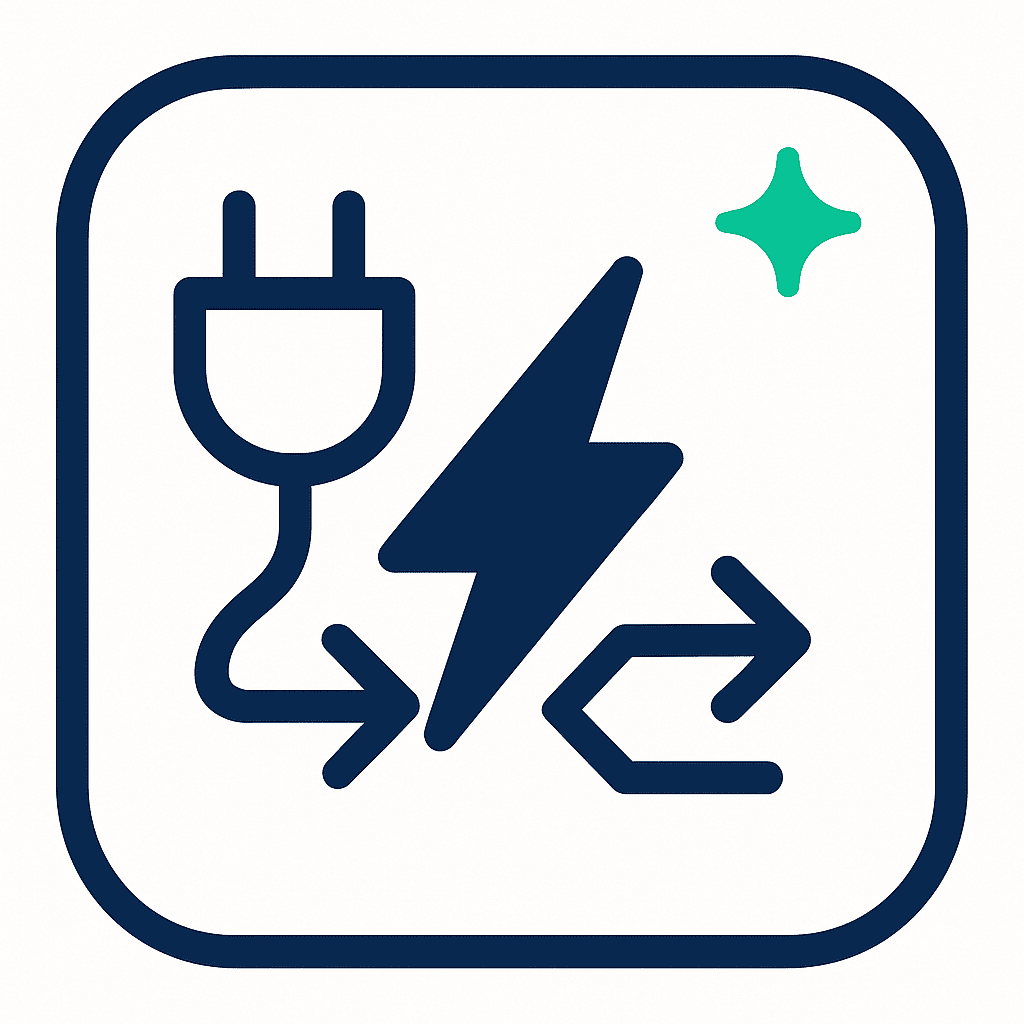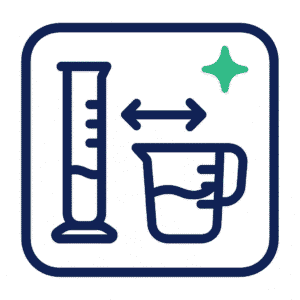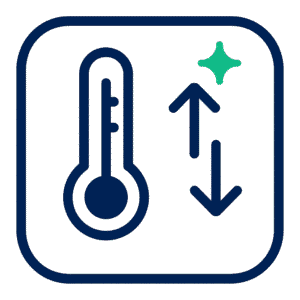This article provides a systematic reference for converting and reasoning about electrical and mechanical power measures. It aims to assemble definitions, exact conversion factors, algebraic relations, worked examples, and practical guidance useful to engineers, technicians, calculators, and mathematically inclined readers. The presentation is neutral, precise, and data-driven; where an authoritative source states a fact, that fact is cited verbatim.
Fundamental Definitions and Single-Line Facts
- The basic SI unit of power is the watt. The National Institute of Standards and Technology (NIST) summarizes the definition concisely: “Unit of power, or rate of work, equal to one joule per second, or the rate of work represented by a current of one ampere under the potential of one volt.” (NIST)
- A kilowatt-hour (kWh) is an energy unit used in billing and practical energy accounting. One kilowatt-hour equals 3.6×106 joules (3,600,000 J). The numeric relationship follows directly from 1 kW = 1000 W and 1 h = 3600 s. (ck12.org)
- Horsepower is a non-SI power unit originating in the late 18th century. Commonly used mechanical definitions convert to SI with high precision: one imperial (mechanical) horsepower is approximately 745.699872 watts; metric variants are slightly different by definition and context. The conversion standard is widely tabulated. (Wikipedia)
- Real (active) power in an AC circuit equals the product of voltage, current, and the cosine of the phase angle between them: P = V I cos f. This relation separates real power from apparent power S = V I and reactive power Q, and it underpins the requirement to track power factor in applied systems. (Electrical Technology)
- Global electricity production and consumption statistics provide context for scale. For example, a recent compilation reported global electricity demand on the order of tens of thousands of terawatt-hours per year; the practical consequence is that routine household units (watts and kilowatt-hours) scale up into multi-TWh national grids. An aggregated dataset reported a global electricity total near 29,471 TWh for 2023. (Ember Energy)
Each of these statements is used repeatedly in the worked examples and pragmatic sections that follow.

Unit Map: Common Power and Energy Units
A compact map of the domestic vocabulary keeps conversions visible.
- Power (rate):
- 1 watt (W) = 1 joule/second (J·s?¹).
- 1 kilowatt (kW) = 1000 W.
- 1 megawatt (MW) = 106 W.
- 1 horsepower (hp, mechanical) ˜ 745.699872 W. (Wikipedia)
- 1 British thermal unit per hour (Btu/h) is a power unit commonly used in HVAC; conversion factors to watts appear in conversion tables (see worked examples).
- Energy (integral of power over time):
- 1 watt-hour (Wh) = 3600 J.
- 1 kilowatt-hour (kWh) = 3.6×106 J. (ck12.org)
- 1 Btu ˜ 1,055.05585262 J (international table Btu). Typical HVAC algebra uses this Btu-to-J factor.
Readers may store these constants in a trusted calculator or spreadsheet for repeated use.
Algebraic Relations and Distinctions
Power conversion is often algebraic rather than mnemonic. The following identities are the basic toolkit.
- Electrical instantaneous power (single-phase):
P(t) = v(t) i(t). For sinusoidal steady-state and time-averaged quantities, use RMS values: P = Vrms Irms cos f. (Electrical Technology) - Apparent, active, and reactive power:
- Apparent power: S = V I (units VA or kVA).
- Active power: P = S cos f (units W or kW).
- Reactive power: Q = S sin f (units VAR or kVAR).
- Mechanical power from torque and angular speed:
P = t ?. If torque t is in N·m and angular speed ? in rad/s, the result is watts. For rotational machines where speed is given in rpm and torque in lbf·ft, standard conversion factors apply to yield horsepower or watts. - Energy accumulation:
E = ? P dt. For constant power P over time t: E = P t. The kWh arises from P in kilowatts and t in hours.
These identities guide unit transformations and error checks.
Representative Conversions and Worked Examples
The following step-by-step calculations illustrate common tasks. Numbers are shown with unit-tracking to reduce transcription errors.
Example A — Convert 5 hp to watts
Use the imperial-mechanical conversion:
1 hp ˜ 745.699872 W.
Hence:
5 hp = 5 × 745.699872 W = 3,728.49936 W ˜ 3.7285 kW.
Reference conversion tables list the factor to at least nine significant digits. (Wikipedia)
Example B — Convert 2.5 kWh to joules
2.5 kWh = 2.5 × 3.6 × 106 J = 9.0 × 106 J.
The equality follows from 1 kWh = 3.6×106 J. (ck12.org)
Example C — From volts and amps to kW with power factor
Given a balanced single-phase supply Vrms = 230 V, Irms = 16 A, and power factor cos f = 0.88:
P = V I cos f = 230 × 16 × 0.88 = 3,238.4 W ˜ 3.238 kW.
This calculation uses the standard AC active-power relation. (Electrical Technology)
Example D — Btu to kW for HVAC sizing
Using the international Btu:
1 Btu ˜ 1,055.05585 J.
To convert a cooling load of 12,000 Btu/h:
12,000 Btu/h × 1,055.05585 J/Btu ÷ 3600 s/h ˜ 3,517 W ˜ 3.517 kW.
Store the Btu-to-J factor in a numeric table for repeated HVAC calculations.
Precision Practices and Common Pitfalls
- Track units symbolically. Put units in every intermediate expression to reveal cancellation or missing factors.
- Avoid casual rounding early in the chain. Round only the final answer to the required significant digits. When an intermediate constant is known to at least eight significant figures (for example, hp-to-watt conversions), use that precision in calculations that will be aggregated.
- Distinguish energy from power. A frequent source of billing confusion arises from treating kW and kWh as interchangeable. A device rated at 1 kW running for 1 hour consumes 1 kWh of energy.
- Account for power factor in AC systems. Apparent power (kVA) and real power (kW) differ when reactive current exists. Contracts and equipment ratings sometimes use kVA rather than kW, which must be reconciled through cos f.
- Check standard definitions for non-SI units. Multiple horsepower definitions exist (mechanical, electrical, metric PS). Confirm the intended variant before converting.
Tools, Automation, and Verification
A compact toolchain yields reproducible conversions.
- Spreadsheet constants block. Store conversion factors with full precision and label sources. Example entries: hp?W, kWh?J, Btu?J, cal?J. A single authoritative source per constant reduces ambiguity.
- Unit-aware calculators and libraries. Use libraries that enforce unit consistency, for example
pintin Python or unit-aware functionality in MATLAB/Octave. Unit-aware code avoids hidden factor-of-1000 errors. - Cross-check against a second source. When results feed contracts or safety margins, compare the calculator output to a trusted online converter or a national standard.
- Document assumptions. Note frequency (50 Hz vs 60 Hz), RMS vs peak voltages, whether horsepower is “mechanical” or “metric”, and the chosen Btu variant.
Efficiency, Losses, and Real-World Corrections
Raw conversions provide theoretical equivalence. Real systems require correction terms.
- Conversion losses. Transformers and inverters introduce conversion losses that reduce delivered real power. Typical modern transformer no-load losses and load-dependent losses are published by manufacturers; choose margins accordingly.
- Thermal derating. Electric motors exhibit temperature-dependent losses and reduced allowable current; nameplate kW is a starting point, not the operating constant under all conditions.
- Billing and demand charges. Utilities may bill for peak demand (kW) in addition to energy (kWh). Accurate conversion between equipment ratings and expected demand profiles reduces bill surprises.
- Power electronics. In DC–AC or AC–DC conversions, waveform distortion (harmonics) can cause apparent power to deviate from simple V I products; standards such as IEEE 519 address harmonic limits. Accounting for harmonic content requires spectral methods beyond the scalar relations presented earlier.
Historical Notes and Standards
James Watt’s work and marketing shaped modern units. The term “watt” honors his name; historical descriptions note Watt’s commercial framing of engine capacity in terms of the labor replaced. A note on the cultural record attributes the phrase “I can think of nothing else but this machine” to Watt in nineteenth-century sources used for commemorative descriptions. (Wikipedia)
Standardization occurred in stages. The International System of Units (SI) promotes the watt as the derived unit for power, and national metrology institutes maintain conversion tables and recommended values. Practitioners should reference the NIST Guide and companion conversion appendices for authoritative numerics. (NIST)
A Short Lexicon for Rapid Reference
- W (watt): SI unit for power. (NIST)
- kW: 1000 W.
- kWh: Energy; 1 kWh = 3.6×106 J. (ck12.org)
- hp: horsepower; conversion depends on the variant; mechanical hp ˜ 745.699872 W. (Wikipedia)
- PF (power factor): cos f in sinusoidal systems; P = V I cos f. (Electrical Technology)
Keep this lexicon adjacent to calculators and design notes.
Practical Conversion Checklist
When an engineer or calculator enthusiast confronts an ambiguous power conversion task, the following checklist reduces rework:
- Identify whether the quantity is power (W) or energy (J, kWh).
- Record system frequency and whether reported voltages are RMS or peak.
- Verify unit variants (which horsepower definition, which Btu).
- Include power factor when the system is AC and reactive currents exist.
- Add efficiency corrections for converters and machines.
- Note billing terms when the result affects cost (energy vs demand).
- Cross-check with a second authoritative source or a unit-aware software library.
The checklist represents an operationalization of the algebraic rules and common pitfalls previously listed.
Sources and Further Reading
The following sources provide concise authoritative reference material for the constants and identities used above:
- NIST glossary entry and unit information for watt and related SI usage. (NIST)
- NIST Guide to the SI, including appendices with conversion factors. (NIST)
- Reference conversion tables and technical articles for horsepower definitions and numeric conversions. (Wikipedia)
- Educational discussions of power factor and the algebraic identities linking active, apparent and reactive power. (Electrical Technology)
- Aggregated global electricity totals and yearly statistics to frame scale. (Ember Energy)
Readers who convert between units frequently may bookmark these pages or capture the numeric factors into a validated local database.
Final Considerations
This guide pairs compact algebraic identities with precise, sourced numeric factors. The practice of tracking units symbolically and reserving rounding for final presentation reduces calculation errors. For applied engineering, the algebraic core—P = V I cos f, torque-speed power relations, and energy accumulation E = ? P dt—is sufficient to translate between watts, horsepower, kWh, and related measures, provided the variant definitions and real-world efficiency corrections are tracked. Verification against national metrology tables and conservative allowances for conversion losses preserve accuracy when theoretical conversions meet practical systems.






